Everyone here at Dim the House Lights writes for some other website, be it their own or something bigger, so it’s about time we get to our yearly round-up of off-site reviews! Rather than limit it to Derek and I like last time, it’s a nice moment to highlight all the cool stuff our pals do elsewhere. Here’s every review and capsule and essay we’ve written elsewhere this year, in alphabetical order by film (or piece title):
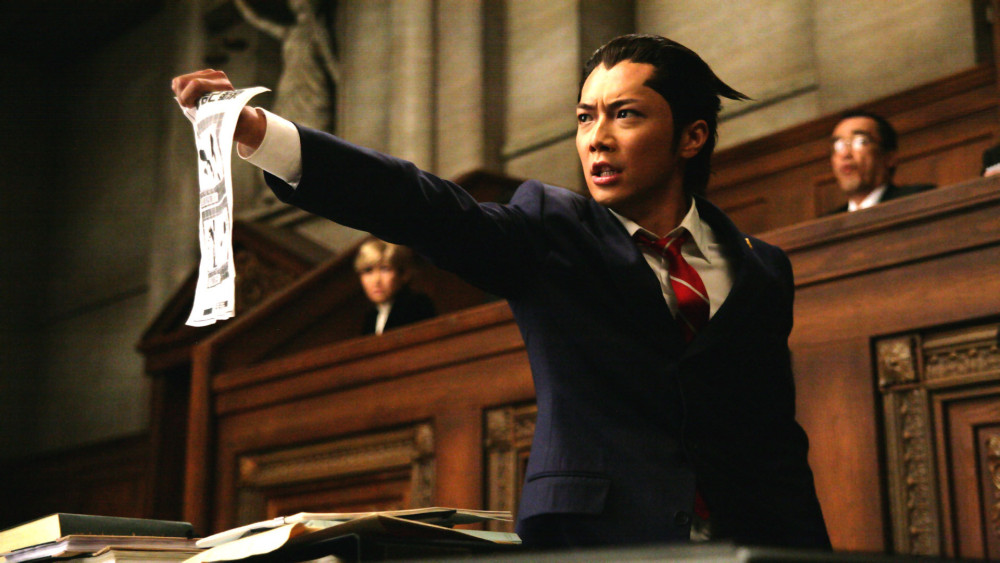
12 Rounds (Renny Harlin, 2009)
“Some performers are very difficult to parse from their roles. This varies from person to person, and performer to performer; for example, I can’t unsee the social construct of Tom Cruise when I see Ethan Hunt. With John Cena, it becomes a little more complex. His performance, like so many other transplants from non-movie environments, lives and dies on how he can either parlay or play off his existing cultural cache. So in twisty little bit of conceptual performance, both John Cena and “John Cena” are playing a cop in this movie that might as well be named John Cena. In fact, this movie is so goofy and preposterous that had John Cena’s character been named John Cena, it wouldn’t have changed a thing. John Cena jumping off of buildings and stopping runaway trams with a car? Just another bump, whatever, this dude is practically Superman.”
A Girl At My Door (July Jung, 2014)
“And exploring controversial, or rather little-seen, themes is exactly what July Jung does best. She’s interested in assessing misogyny inherent in society, specifically with the way women are dismissed in male-dominated field that are defined by power (i.e. chief of police). Even more fascinating though is the way she exposes a nation’s homophobia.”
A Little Gamey: Why “Cinematic” Should Be a Dirty Word in Video Games
“The simple problem here is this: telling an invariable and linear story is not the best use of games as an art form, because this is something games simply cannot do as well as movies or novels; the kind of movement between active agent and passive participant the audience must undergo repeatedly to make this effective is ridiculous. If one’s goal is to tell the audience this kind of story, then they need to accept that games simply aren’t the art form they’re looking for…So why, why on earth are video games trying to express in a language that their tongues are not suited to pronounce?…In their attempts to be “real art” (whatever that means), games cease to create unique experiences and instead ape experiences they already see as having artistic clout, and even the best of these can’t help but feel like photocopies of the experiences the player actually wants to have.”
Ace Attorney (Takashi Miike, 2012)
“Ace Attorney is a dense movie, directed with skill by Takashi Miike, and stuffed with a million details that make it feel lived-in. It is also an incredibly well-cast film, right down to the bit parts. It’s a formally vibrant film; next-level cross-fade transitions, tons of background gags, nervy jump cuts late in the movie that parallels a nervous breakdown. In a strange way, this movie reminded me of Alan Rudolph’s Trouble in Mind: there’s at least three decades’ worth of crime movie archetypes in the cast; a major societal paradigm shift has clearly happened, but is never really addressed beyond a few throwaways; everyone’s backstory is really, really sad (although this is played for laughs a few times by master tone juggler Miike). There’s an intoxicating mix of cartoonishness and pathos peppered throughout. Striking that particular balance between freshness and familiarity, fan service and idiosyncrasy, is key to making an engrossing, masterful VG adaptation.”
Amor Eterno (Marçal Forés, 2014)
“Amor eterno proves to be quite the enjoyable and thrilling drama, one that actually ends up being a little romantic in its own macabre way.”
“Cube is basically 90 minutes of people trying to avoid death traps. Natali gets a lot of mileage from the tension inherent to the premise; this movie probably has the most frayed nerves per minute than any other I can recall. It wastes absolutely no time in establishing the tone of the film. In its truly remarkable first sequence, a man wakes up in a cube, goes into another cube, and in a startlingly graphic sequence, gets diced into a stack of meat cubes, which grotesquely topples over like the world’s grossest game of Jenga, which segues straight into the title card. No dialogue, no credits, just the purest form of diegetic set-up. This is next-level narrative concision, on par with the pulp novels and Twilight Zone episodes the film seeks to emulate.”
“Pablo Larraín is back in true form with El Club, a film that’s as miserably hilarious as it is scathingly confrontational about the state of the Catholic church and the men it protects.”
Embrace of the Serpent (Ciro Guerra, 2015)
“To say that narratives about colonialism and the dichotomy of native and nonnative are a dime a dozen isn’t much of a stretch, and Embrace of the Serpent is just another one of the bunch.”
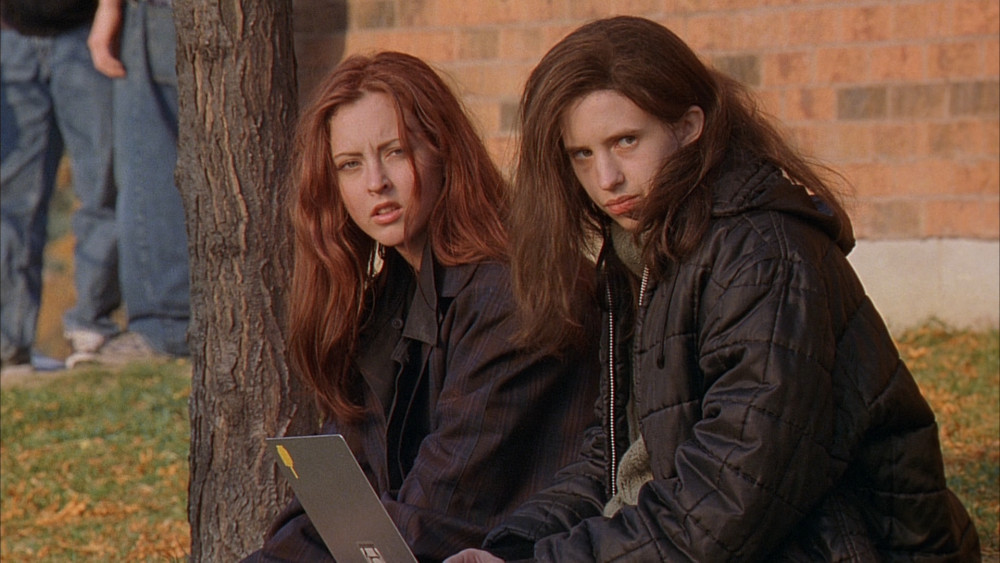
Ginger Snaps, It Follows And The Horror of Adolescence
“In both films, the line between sex and violence becomes complicated and mixed, and what was desired (in It Follows, sex, in Ginger Snaps, death) shows the ugliness and cruelty inherent within it. When Ginger throws up blood after eating the dog next door (and after having sex with the high school skeez), she tells her sister, “I get this ache, and I thought it was for sex, but it’s to tear everything to fucking pieces.”…The idea of loving someone and the idea of that person being able to hurt you haven’t been separated or fully formed, so they swim around each other, circling their conflicts and meshing together into the hormonal rush of puberty.”
Goin’ Down the Road (Donald Shebib, 1970)
“Shot on 16mm reversal stock using handheld cameras, the film has a scrappy, hardscrabble look that wouldn’t have felt out of place in a vérité-style doc by Michel Brault or Pierre Perrault (tellingly, Shebib paid his dues making documentaries for both the NFB and the CBC). The colour palette the film uses is so washed out and faded that this writer mistakenly thought the film was shot in black-and-white. The leads were Doug McGrath and Paul Bradley, two non-professional actors from the West Coast with the thickest, most glorious hoser accents this side of the Confederation Bridge. It featured two delicate, beautiful songs by a then-unknown Bruce Cockburn, excellent location photography of downtown Toronto, and colourful, partially-improvised dialogue by the performers. But most importantly, there is a strong emotional core to the film, a sense of empathy towards a couple of losers from Nova Scotia just trying to make it, whatever that may mean.”
“Mills has made a surprisingly sweet, sad, and funny flick that, in less than 90 minutes, turns out to be far more than the light actor-as-counselor narrative it’s billed as.”
I Nostri Ragazzi (Ivano De Matteo, 2014)
“The concept of building an entire narrative prefacing a climactic event (which is essentially what The Dinner is) could be great if done right. And I nostri ragazzitries to do that; offering a glimpse of what these characters are like in their daily lives, outside of a tense situation. The problem is that none of the characters are actually interesting.”
“Legend is the stuff of a cheesy Dungeons and Dragons campaign, a feeling exacerbated in the U.S. cut by having the whole mess scored by Tangerine Dream. If that wasn’t enough, the U.S. cut ends with a song called “Loved by the Sun,” performed by Yes frontman/real-life elf Jon Anderson. The European cut fares better, not only because it adds footage to patch up some narrative holes and fix some pacing issues, but because it reinstates Jerry Goldsmith’s excellent score.”
Les Combattants (Thomas Cailley, 2014)
“There isn’t much that separates Les Combattants (a much better title for the film than its on-the-nose English one) from any romantic comedy. Aside from the fact that a portion of the film takes place in an unromantic military boot camp, the relationship between the two unfolds as a typical romantic back-and-forth.”
The Magic of Miyazaki – Retrospective Interview/Essay
“Like the best animators, Miyazaki makes movies that speak to audiences of any age – child or adult – and although they are often rooted in Japanese culture, they are also able to travel the world due to his tendency to blend dream worlds with reality. To enjoy a Miyazaki film, you only need to sit back and allow his imagination to sweep you away.”
Margarita With A Straw (Shonali Bose, 2014)
“Margarita With A Straw doesn’t aspire to making great statements, and it doesn’t have to. It’s comfortable offering a familiar queer romantic drama through the lens of a woman with a disability, and that’s perfectly fine, solely because of how dedicated it is to not limiting her to that, painting her as a real woman through and through.”
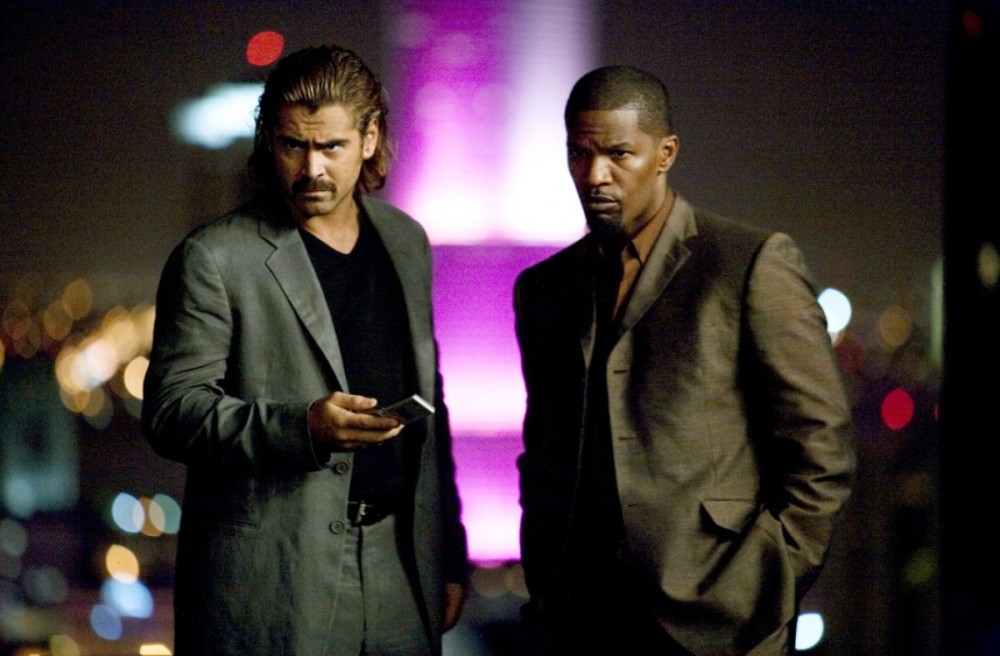
Miami Vice (Michael Mann, 2006)
“It may not be a total throwback, or typical and easily digestible action fare, or heavy on the substance due to a light and loose narrative, or even a portrait of Miami worth checking out. But anyone willing to dismiss it needs to rethink the way they look at film, because Miami Vice has all the style, grace, and subtle characterization it needs to be considered a great work of art.”
Nasty Baby (Sebastián Silva, 2015)
“And Nasty Baby succeeds because of its sheer willingness to contemplate how strange and pressure-inducing having a child with your best friend, or your boyfriend’s best friend. With this, Sebastián Silva has made yet another film that very likely won’t work for everybody, but is undoubtedly solidifying him as one of the most interesting indie filmmaking voices around, queer or not.”
Nothing (Vincenzo Natali, 2003)
“While most of the film takes place in the titular nothingness, it begins squarely in Terry Gilliam territory, where the real world is nothing more than a series of loud noises, dangling wires, and bureaucratic nonsense. Toronto’s distinct skyline has a photocopied, off-kilter collage quality to it (other sequences in the film are animated, one using paper dolls, one using wax crayon doodles). Everything is arranged in a deliberately haphazard manner that evokes a very specific kind of urban unreality (case in point, the half-duplex sandwiched between the opposing directions of Highway 401), which is the perfect backdrop for what appears to be the literal worst day ever experienced by anyone ever.”
Sangue Azul (Lírio Ferreira, 2014)
“Whether [Daniel] de Oliveira’s sensitive performance and the film’s stunning visuals make Sangue Azul worth the investment is up to the viewer.”
“Scream’s reputation as the harbinger of self-aware horror is not entirely fair to its predecessors. The horror genre, and slasher subgenre in particular, had been aware of and commenting on its tropes since they began to solidify in the early 80s.”
Stories of Our Lives (Jim Chuchu, 2015)
“Gorgeously shot in black and white, Stories of Our Lives is connected by a simple thread: the stories of gay, lesbian, bisexual, trans, and intersex individuals from Kenya. As an exploration of queerness, it offers a variety of situations that anyone can relate to while contrasting that with narratives that are exclusive to Kenya.”
The Strongest Man (Kenny Riches, 2015)
“The Strongest Man is at its best when it’s ignoring plot and romance and instead exploring the texture and depth of the film’s introspective characters. As such, it may not be as tight and charming as Riches’ first film, Must Come Down, but it leaves one hoping he’ll continue exploring this weird little city called Miami.”
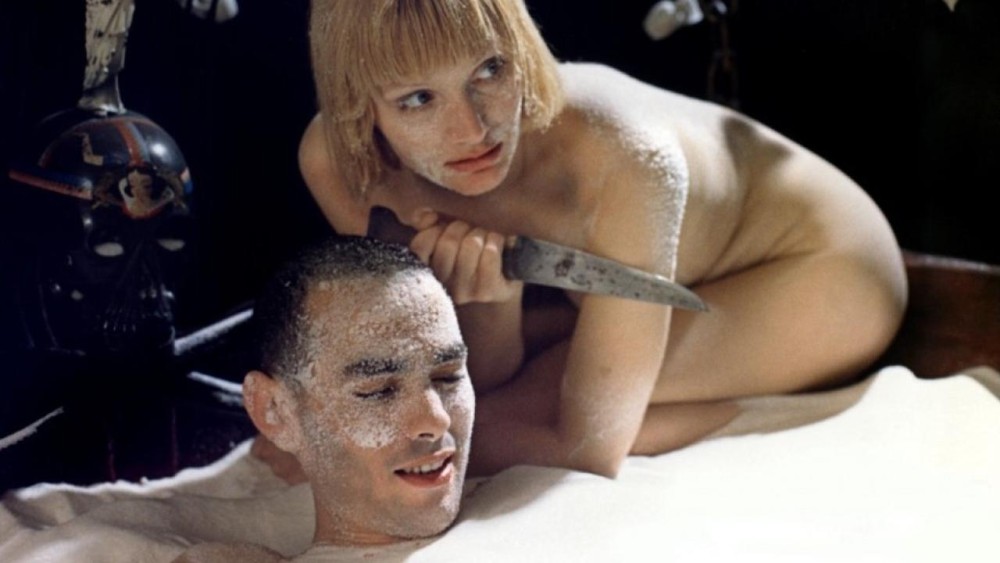
Sweet Movie (Dusan Makavejev, 1974)
“all of the politics displayed, the seemingly incompatible and different ideologies, created both by the oppressors and the oppressed, were all based in exploitation, unable to remove themselves from the central tenant of global commerce. The communist revolutionary is unable to extricate herself from the decrepitude of the world, and as such her revolution is really just an enactment of the same values; the relationships between people, between their bodies, isn’t something that can be changed by sexual repression or liberation, as both approaches keep the same relationships and interactions, merely changing their interpretations of this relationship; the ideas of sex as control and power, as violence and the reaction to violence, have not been removed. The body is still a vessel for ideas, instead of the idea as a vessel for the body.”
“This is a sex comedy, but not in the way you might think it. In a classical offering from the Boner Jam era, the comedy comes from the charmingly bumbling hero/ine’s Quest for Sex. In Tangerine, the comedy happens around said quest, but in a decidedly more adult context: the protagonists are two trans sex workers […] in the middle of a hectic Christmas Eve seemingly 100% composed of shitty boyfriends, even shittier johns, and wacky mistaken-identity hijinks.”
Todos Estan Muertos (Beatriz Sanchís, 2014)
“Sanchís has made an interesting debut withTodos están muertos, but it’s one that could have used a little more focus and even more of its amazing leading lady.”
The Vanishing (George Sluizer, 1988)
“A pretty straight line can be drawn between this film and the reverse-engineered whodunnit of Gone Girl or the fake-real-fake wormhole of The Game, but [author Tim] Krabbé, who also wrote the film’s screenplay, doesn’t indulge in pulp or sleaze or fake-outs. He’s more interested in quiet, foreboding menace, which makes it about a thousand times more unnerving than it already would be.”
“It’s a shame to witness a queer poet who is so genuinely interesting be slammed with a biopic as unfortunately impersonal as Yona is.”
—
Off-Site Interviews:
- Iris Apfel (Iris)
- Patrick Brice & Jason Schwartzman (The Overnight)
- Benoît Debie (Spring Breakers, Lost River, Love) – Pt 2 on site
- Jeanette Garcia and Daryl Rodriguez (World 1-1)
- Catherine Hardwicke (Miss You Already)
- Leslye Headland (Sleeping with Other People)
- Mélanie Laurent (Breathe)
- Rhonda Mitrani (Cuba Mia)
- Anna Muylaert (The Second Mother)
- David Oyelowo (Captive)
- Lacey Schwartz (Little White Lie)
- Peter Strickland (The Duke of Burgundy)
- Kareem Tabsch & Joey Daoud (Dolphin Lover)
—
Podcasts:
- 30 Below [7 episodes]
- Stuck in the Middle With You [24 episodes]
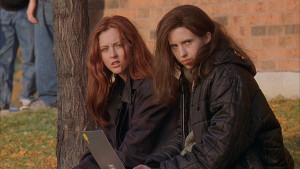
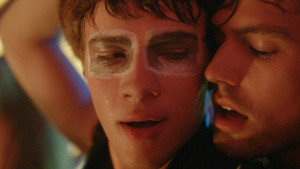

 Derek
Derek
 Isabelle
Isabelle